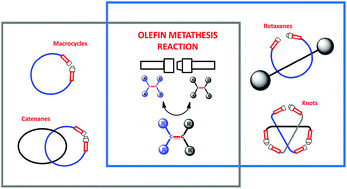Olefin metathesis reaction as a locking tool for macrocycle and mechanomolecule construction
Abstract
The present review deals with an updated visit to the olefin metathesis reaction as a powerful tool for the construction of sophisticated macromolecular architectures. Today, the reaction has proved to be one of the most popular processes, not only for the synthesis of novel cage and huge calixarene-based macrocycles, or more complex structures containing these privileged moieties, but also for the construction of complicated topologically intriguing molecules, such as catenanes, rotaxanes and knots. Notably, their use ranges from chemistry and biology, as catalysts and drug delivery systems, respectively, to materials research, as molecular motors and switches. The reaction effectiveness arises from the intrinsic specificity for the highly stable reactive end-groups (e.g. alkene moieties) and the feasibility to perform the reaction in relatively non-polar solvents, maximizing the supramolecular interactions often involved in the templation strategies. By moving from calixarene-based macrocycles to mechanically interlocked molecules, the review takes into account several synthetic strategies involving the olefin metathesis reaction highlighting its increasing utility and future potential in the synthesis of molecular machines.

- This article is part of the themed collection: 2018 Organic Chemistry Frontiers Review-type Articles


 Please wait while we load your content...
Please wait while we load your content...